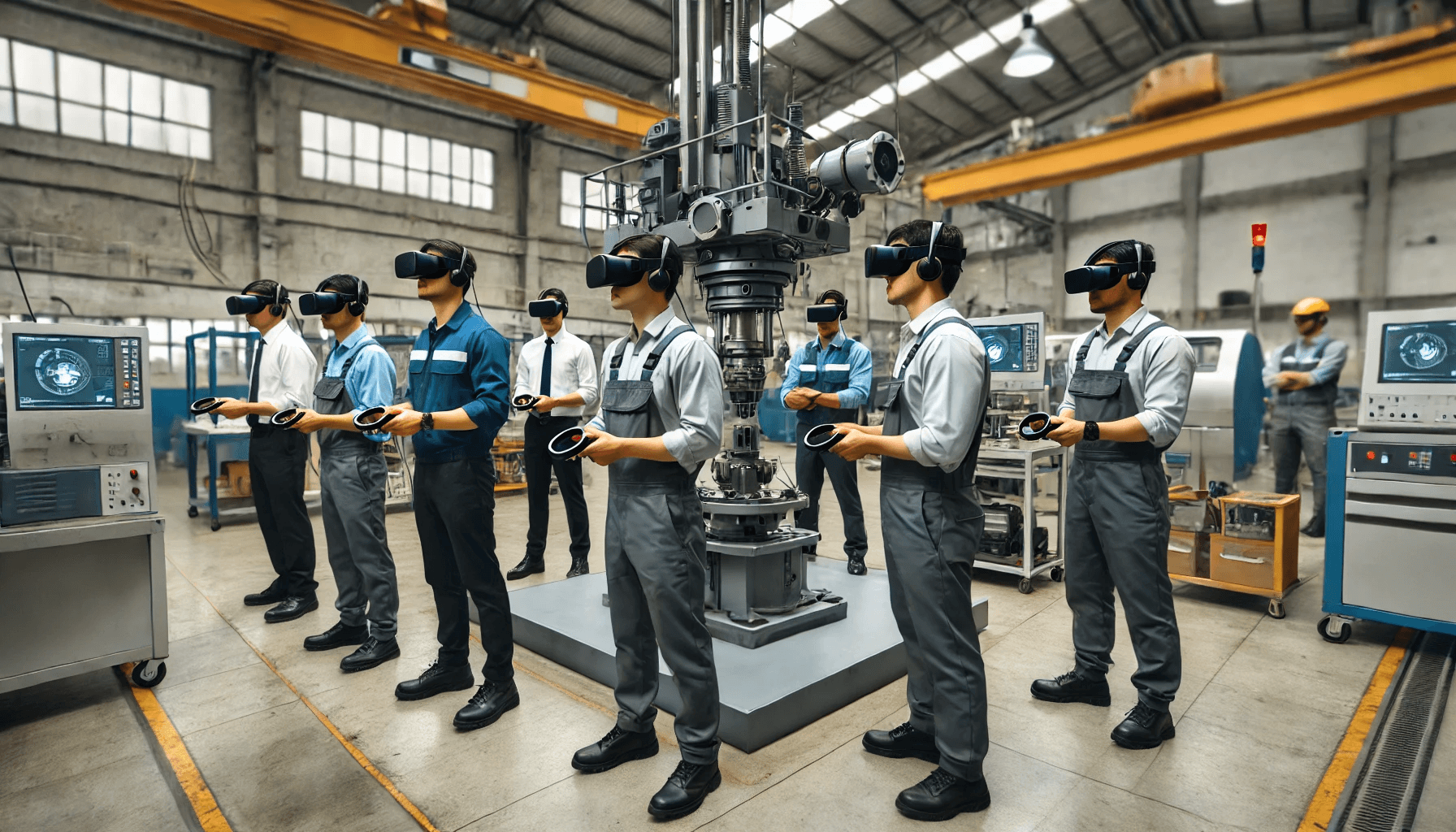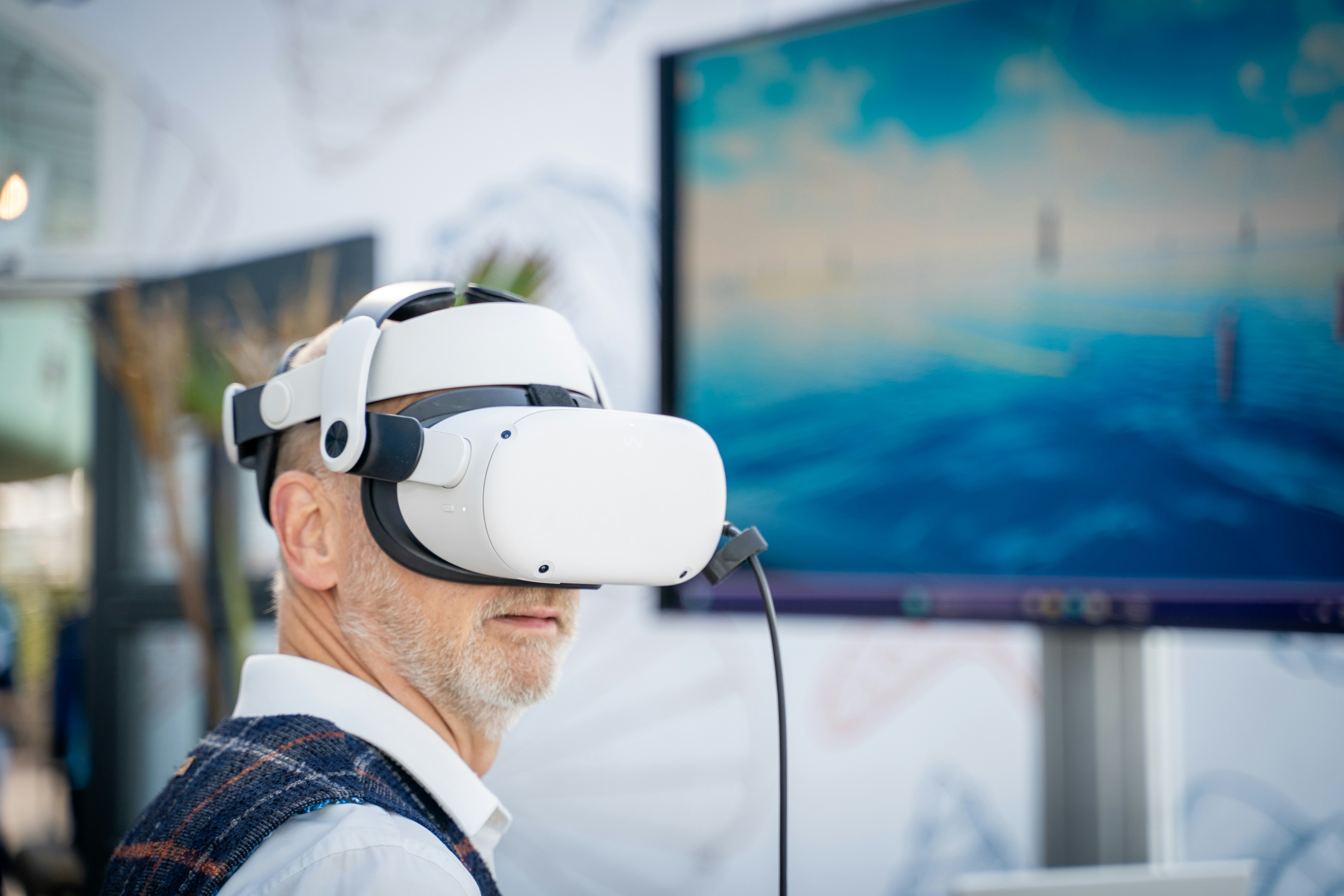Now, let’s move on to how you can implement training standardization using virtual reality.
Below is a step-by-step process that gives you an overview of the entire process. Consider this as a starting point. Once you possess deeper knowledge, you can tailor this process based on your specific needs and preferences.
Let’s begin:
Step 1: Define Goals and Objectives
The Why
The first question you should answer is the why.
As in, why are you standardizing your training?
Is it to increase the overall safety of your workforce? Is it to increase the efficiency of a particular process?
Your entire VR training standardization stems from this answer. It informs the entire standardization process.
The What
The next question you should ask is what training modules are you going to create.
For instance, do you want to improve certain processes that would increase organizational productivity? Or do you want to improve the safety of certain machinery in your plants?
As mentioned before, this ties in directly with why you are standardizing your training.
Once you answer this question, you’ll have a list of possible modules that you can create.
The How
Finally, there’s the third question: how are you going to measure training effectiveness?
You determine the metrics that signal the success of your training modules at this stage. These metrics depend upon numerous factors - all of them directly tied in with the reasons why you are implementing training in the first place.
For instance, suppose the reason you are implementing training standardization is to improve overall safety. Then a metric you can choose is the percentage reduction of safety-related accidents, before and after implementation of training standardization.
Step 2: Choose a Creation and Deployment Platform
The next big step in VR training standardization is the selection of a platform to create and deploy your training modules.
Before you opt for one platform over another, there are several factors you must look into:
Scalability
One of the main reasons for implementing VR standardization is to train personnel at scale. So, the platform’s scalability is critical.
In this context, there are two metrics that you must look into:
Scalable User Base:
Does it support starting with a small set of users and then gradually scaling it up to thousands of users?
A platform that aids in standardization must be robust enough to scale down and up based on the number of users.
Concurrent Users
How many users can the platform support at the same time?
In enterprise training, there can be moments when there are numerous users engaged with the training platform. So, there the platform should be robust enough to support a lot of concurrent users, with zero downtime.
Addition of New Modules
The more you become familiar with the VR training ecosystem, the higher the chances you would want to add additional modules.
Because the more time passes, the more you reap the benefits of VR training. And the more you would want to turn certain processes and procedures into VR training modules.
Any VR training platform intended for standardization must be able to seamlessly integrate future modules.
Hardware Compatibility
There are numerous VR headsets in the market, including from big names such as Apple and Meta and smaller companies like Pico.
A VR training platform has to be compatible with a range of headsets. Because if not, it creates certain barriers to entry.
Consider a situation if the platform only supports the latest higher-end models. In such a case, organizations that have already invested in relatively older models of headsets wouldn’t be able to leverage the platform’s abilities.
In short, they become left out.
Data Handling
If you implement standardized VR training at scale, you’re going to have a large amount of data to handle. There are numerous challenges associated with this.
Storage
The storage of huge chunks of data requires a robust infrastructure. Besides, the system must not just store data but also enable its retrieval at the right moment.
Real-Time Processing
If the training modules involve instances of real-time data processing, such as adaptive learning and instant feedback, the platform must be capable of handling such tasks. There should be no lags and delays, which could potentially disrupt the immersion and in turn, even affect the training effectiveness.
Privacy and Security
VR training often involves a lot of sensitive information. So, the platform must be secure enough to handle this information, ensuring it remains both safe and secure. Because the mishandling of the data can lead to serious consequences, including legal.
Analytics:
You must select a platform that has robust analytics. Because of numerous reasons:
Performance Tracking
It enables tracking the performance of the trainees. You can collect data on multiple metrics, including completion time, test scores, retention rate, etc. You can even identify the top and low performers from this data.
Insights
You can glean numerous insights from the analytics data. For instance, if all your users are consistently failing to learn from a certain part within a training module, it might be an indication that you need to re-design the module for better effectiveness.
Benchmarking
With analytics, you can assess if your trainees are performing up to par. These could be industry benchmarks or internally determined benchmarks.
A/B Testing
You can conduct A/B testing, segmenting the audience into two, and offering them similar but slightly varying experiences. You can set KPIs and compare the behaviour and performance of both sets of audiences based on this benchmark.
Custom Deployment:
You should ensure the VR training platform supports deployment on-cloud and/or on-premise based on your preference.
On-Cloud Deployment
Refers to hosting the VR training modules on the cloud. The biggest benefit of on-cloud deployment is that it is accessible from anywhere with an internet connection.
On-Premise Deployment
Under this method of deployment, the training module is hosted in physical servers on the premises of the organization. It offers better control and security, minimizing the risk of exposure to external threats.
Integration with Existing Systems:
In most cases, enterprises have their own internal systems. Two main ones include LMS systems (such as Cornerstone) and HR management systems (such as Rippling.)
A robust VR training platform seamlessly integrates with the existing LMS and HR systems, ensuring smooth transmission of relevant data.
It also enables centralized management of training data, offering the trainees a better learning experience.
Step 3: Develop A Standardized Content Creation Process
The next step in the line is to develop a standardized creation process.
Create Standard Templates:
You can create a standardized training template for all your modules. These can contain elements such as the intro and outro, main content, and the evaluation section.
This acts as a north star for your training module creation endeavour. Because following a template allows you to maintain a consistent experience across all your training modules, thus enhancing the overall effectiveness of your training.
For individual modules, you can customize the template based on the requirements.
Implement Modular Design:
You can follow the modular design approach of breaking down the training module into discrete and interchangeable components.
The main benefit of such an approach is the re-usability. This fosters better efficiency and scalability. It also makes future updates quicker and faster.
Utilize Generative AI:
Generative AI can help you create the initial SOPs. You can then further tweak them to improve it.
For instance, imagine you want to create a VR module about the operation of a particular machinery. You can input existing safety procedures and compliance requirements. The AI will then analyze this data, compare it with its own data set. It then provides an SOP document that details the step-by-step procedures as the output.
VRseBuilder’s Creation Studio combines modular design with AI-powered content generation. Thus, it gives you the tools to create high-quality and tailored VR training experiences for your target audience.
Step 4: Phased Rollout
You can roll out the modules step-by-step.
First, you can select a small subset of the overall possible users. Like, an individual plant or a particular department of workers.
Now, you can roll out VR training to this initial target audience rather than for your entire enterprise all at once.
Then, based on the response and effectiveness of training these workers, you make further decisions.
For example, the initial rollout may reveal that certain tweaks to the existing modules are necessary. In such a case, it makes sense for you to make those tweaks and improve the overall experience.
Once the initial rollout is satisfactory, you can roll out the modules for your entire enterprise or organization.
Like in the case of JSW. For JSW, VRseBuilder enabled the creation of a single initial module. The project rollout was such a success that it has extended to other business verticals of JSW, such as Port and Energy.
Step 5: Iteration and Maintenance
The final step is the iteration of the VR training modules and their maintenance. It involves certain key areas.
Conduct A/B Testing:
You can conduct A/B testing to gain insights both into areas that need tweaking and into areas that are perfect as they are.
The biggest benefit of A/B testing is that it frees you from having to rely on your instincts or prior experience. Rather, you can rely on concrete data to get an objective view of your users’ performance and behaviour.
Hence, you become able to make better decisions.
Incorporate User Feedback:
Post your standardization of training using virtual reality, you are bound to receive feedback. These can come from several corners, including your users themselves or even from your stakeholders.
This feedback can help you further improve your VR training modules and tailor them for better effectiveness.
If you don’t receive any feedback organically, you can even set up systems to capture feedback. One idea you can use is to incorporate a post-usage survey that asks the respondent a bunch of questions related to your training modules.





